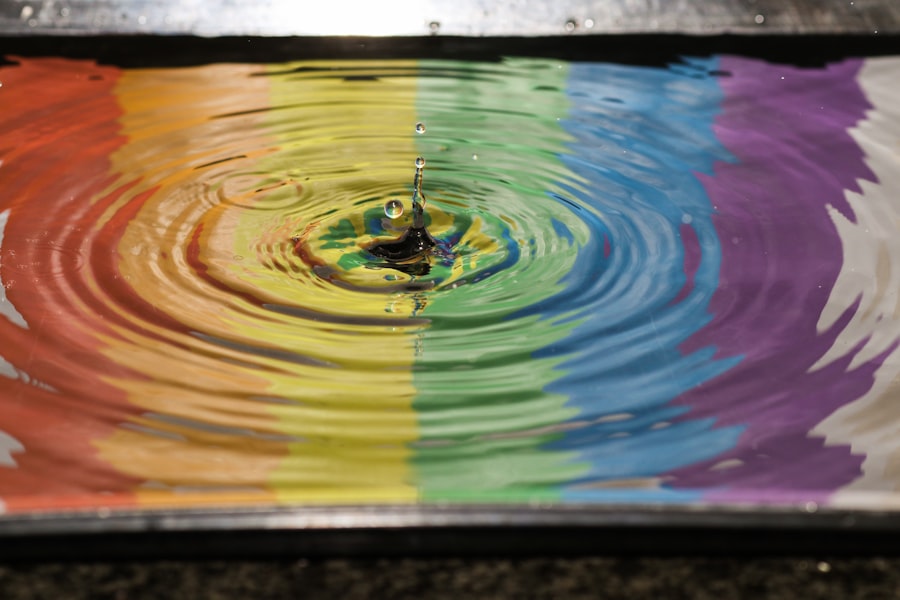The discourse surrounding gender has evolved significantly over the past few decades, transitioning from a binary understanding rooted in biological determinism to a more nuanced perspective that acknowledges the interplay of both nature and culture. Traditionally, gender was often viewed through a lens of strict biological roles, where male and female identities were seen as inherently linked to physical attributes and reproductive functions. However, contemporary discussions emphasize that gender is not merely a reflection of biological sex but is also profoundly shaped by cultural contexts, societal norms, and individual experiences.
This duality of nature and culture raises critical questions about how we define gender and the implications of these definitions on personal identity and societal structures. The nature versus culture debate invites us to explore how biological factors such as chromosomes and hormones interact with cultural influences like family upbringing, media representation, and social expectations. As we delve deeper into this complex interplay, it becomes evident that understanding gender requires a multifaceted approach that considers both innate characteristics and the sociocultural environment in which individuals exist.
Key Takeaways
- Gender is a complex interplay between nature and culture, with both biological and societal factors shaping individual identity.
- Biology plays a role in gender identity, but it is not the sole determinant, as cultural influences also play a significant part in shaping how individuals express their gender.
- Cultural norms and expectations heavily influence how individuals express their gender, often leading to the reinforcement of traditional gender roles and stereotypes.
- The intersection of nature and culture in gender is a dynamic and multifaceted process, with individuals navigating their identity within the context of both biological and societal influences.
- Debunking myths and misconceptions about gender is crucial in moving towards a more inclusive understanding of gender, one that recognizes the diversity and complexity of individual experiences and identities.
Biological factors play a significant role in shaping gender identity, influencing how individuals perceive themselves and how they are perceived by society.
This chromosomal distinction is accompanied by a range of physiological differences, including reproductive anatomy and secondary sexual characteristics that emerge during puberty.
However, the relationship between biology and gender identity is far from straightforward. Research in the field of neuroscience has revealed that brain structure and function may also contribute to gender identity. Studies have shown that certain brain regions differ in size and activity between males and females, suggesting a biological underpinning to gender identity that transcends mere physical characteristics.
For instance, the bed nucleus of the stria terminalis (BSTc), a region implicated in sexual behavior, has been found to differ in size between transgender individuals and their cisgender counterparts, indicating that biological factors may influence one’s sense of self in relation to gender. Moreover, hormonal influences during critical periods of development can further complicate the relationship between biology and gender identity. Prenatal exposure to sex hormones such as testosterone and estrogen can shape not only physical traits but also behavioral tendencies and preferences.
For example, studies have indicated that higher levels of prenatal testosterone may correlate with increased interest in traditionally masculine activities among females. These biological insights underscore the complexity of gender identity, suggesting that while biology provides a foundation, it does not dictate an individual’s experience or expression of gender.
The Influence of Culture on Gender Expression
While biology lays the groundwork for gender identity, culture plays an equally pivotal role in shaping how individuals express their gender. Cultural norms dictate what behaviors, appearances, and roles are deemed appropriate for different genders, often reinforcing traditional stereotypes. From a young age, children are socialized into these norms through various channels, including family dynamics, educational systems, and media representations.
For instance, boys may be encouraged to engage in rough-and-tumble play while girls are often steered towards nurturing activities, creating a framework within which they learn to navigate their gender identities. The impact of culture on gender expression is particularly evident in the realm of fashion and personal presentation. Different cultures have distinct expectations regarding clothing and grooming that signal gender identity.
In many Western societies, for example, women are often expected to wear dresses or skirts while men are typically seen in trousers. However, these norms are not universal; cultures around the world exhibit diverse expressions of gender through clothing choices that challenge binary classifications. The hijab worn by Muslim women or the kilt traditionally worn by Scottish men exemplifies how cultural practices can defy simplistic notions of gendered attire.
Furthermore, media representation plays a crucial role in shaping societal perceptions of gender. Television shows, films, and advertisements often perpetuate stereotypes that reinforce traditional gender roles. However, there has been a growing movement towards more inclusive representations that challenge these norms.
Characters who defy conventional gender expectations—such as those who identify as non-binary or genderqueer—are becoming more visible in popular culture, prompting broader discussions about the fluidity of gender expression. This cultural shift reflects an increasing recognition that gender is not a fixed attribute but rather a spectrum influenced by individual choice and societal context.
The Intersection of Nature and Culture in Gender

The intersection of nature and culture in understanding gender is a complex tapestry woven from biological predispositions and cultural narratives. Rather than viewing biology and culture as opposing forces, it is essential to recognize how they interact to shape individual experiences of gender. For instance, while biological factors may predispose individuals to certain behaviors or identities, cultural contexts can either reinforce or challenge these inclinations.
Consider the case of transgender individuals who experience a disconnect between their assigned sex at birth and their identified gender. Biological factors may contribute to their sense of self; however, cultural acceptance or rejection plays a significant role in their ability to express their true identities. In societies where transgender identities are embraced, individuals may find support systems that affirm their experiences, leading to greater psychological well-being.
Conversely, in cultures where such identities are stigmatized or criminalized, individuals may face significant barriers to acceptance and self-expression. Moreover, the concept of intersectionality further complicates our understanding of gender by highlighting how various social categories—such as race, class, sexuality, and ability—intersect with gender identity. For example, a Black transgender woman may navigate her identity differently than a white transgender man due to the compounded effects of racism and sexism she faces.
This intersectional lens emphasizes that experiences of gender are not monolithic; rather, they are shaped by a multitude of factors that interact in unique ways for each individual.
Debunking Myths and Misconceptions about Gender
The discourse surrounding gender is often clouded by myths and misconceptions that can perpetuate misunderstanding and discrimination. One prevalent myth is the belief that gender is strictly binary—an oversimplification that fails to account for the diversity of human experiences. This binary framework not only marginalizes non-binary individuals but also reinforces rigid stereotypes about masculinity and femininity that can be harmful to all genders.
Another common misconception is the idea that gender identity is solely a product of socialization. While cultural influences undoubtedly shape our understanding of gender roles and expectations, they do not negate the existence of innate aspects of gender identity. Research indicates that many individuals have a deep-seated sense of their gender identity from an early age, suggesting that it is not merely a social construct but rather a complex interplay of biological and cultural factors.
Additionally, there is often confusion surrounding the distinction between sexual orientation and gender identity. While sexual orientation refers to whom one is attracted to—be it same-sex or opposite-sex individuals—gender identity pertains to one’s internal sense of being male, female, or something else entirely. This conflation can lead to misunderstandings about the experiences of LGBTQ+ individuals and perpetuate stigma against those who do not conform to traditional norms.
Moving Towards a More Inclusive Understanding of Gender
As society continues to grapple with the complexities of gender identity and expression, there is an urgent need for a more inclusive understanding that embraces diversity rather than enforcing conformity. This shift requires not only acknowledging the spectrum of gender identities but also actively challenging societal norms that perpetuate discrimination and exclusion. Education plays a crucial role in this process; by fostering awareness about the nuances of gender through comprehensive curricula in schools and community programs, we can cultivate empathy and understanding among future generations.
Moreover, advocacy for policy changes that protect the rights of all individuals—regardless of their gender identity—is essential for creating an inclusive society. Legal recognition of non-binary identities, access to healthcare for transgender individuals, and protections against discrimination in employment and housing are critical steps toward ensuring equality for all genders.
In addition to policy changes, fostering inclusive spaces within communities—such as workplaces, schools, and public institutions—can help create environments where individuals feel safe expressing their authentic selves. Initiatives such as diversity training programs can equip individuals with the tools needed to navigate conversations about gender with sensitivity and respect. By embracing a more inclusive understanding of gender that recognizes both biological diversity and cultural complexity, society can move toward a future where all individuals are empowered to live authentically without fear of judgment or discrimination.
In the exploration of gender dynamics, the debate often centers around the influences of nature versus culture. A related article that delves into the complexities of understanding diverse systems is “Understanding the Diversity of Buddhism: Exploring Mahayana, Hinayana, and Sunyata.” This piece provides insights into how different cultural and philosophical frameworks can shape perceptions and practices, much like the cultural influences on gender. For more information, you can read the full article here.
FAQs

What is the nature vs. culture debate in understanding gender?
The nature vs. culture debate in understanding gender refers to the ongoing discussion about the extent to which biological factors (nature) and social and cultural factors (nurture) influence the development of gender identity and behavior.
What are the biological factors that influence gender?
Biological factors that influence gender include genetics, hormones, and brain structure. These factors can play a role in shaping an individual’s gender identity and behavior.
How do social and cultural factors influence gender?
Social and cultural factors, such as family, peers, media, and societal norms, play a significant role in shaping an individual’s understanding of gender roles, expectations, and expressions. These factors can influence how individuals perceive and perform their gender identity.
Is gender solely determined by nature or culture?
Gender is not solely determined by either nature or culture. Both biological and social factors interact in complex ways to shape an individual’s gender identity and behavior. It is important to consider the interplay of these factors in understanding gender.
What are some common misconceptions about the nature vs. culture debate in understanding gender?
One common misconception is that gender is solely determined by biological factors, ignoring the significant influence of social and cultural factors. Another misconception is that gender is entirely a social construct, disregarding the role of biological factors in shaping gender identity and behavior. It is important to recognize the multifaceted nature of gender development.























+ There are no comments
Add yours